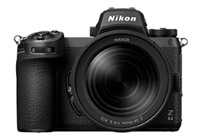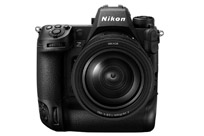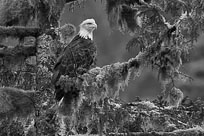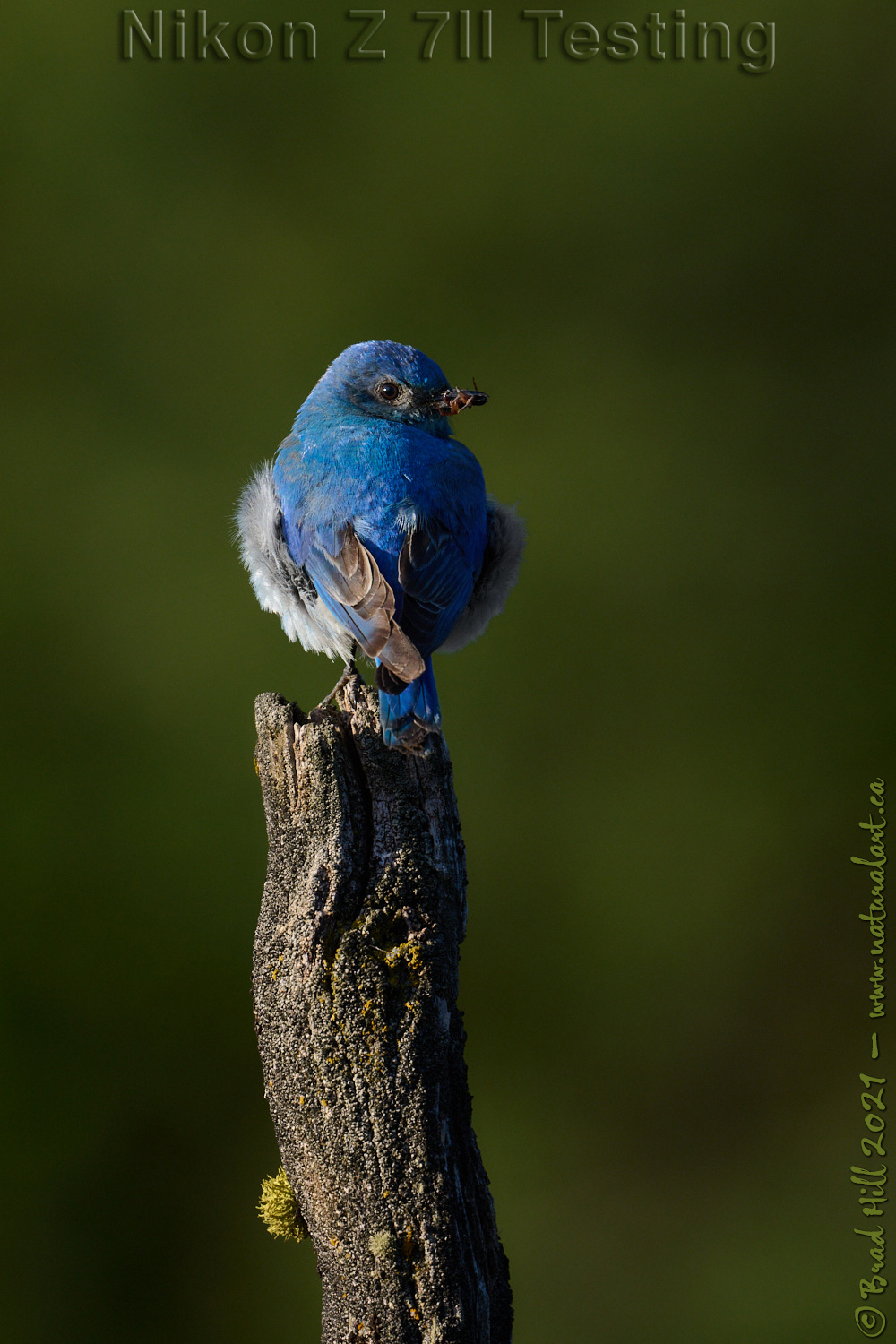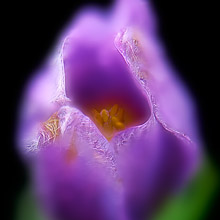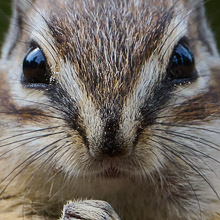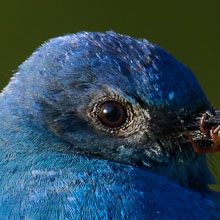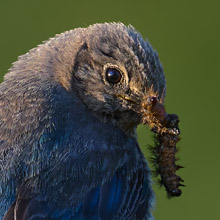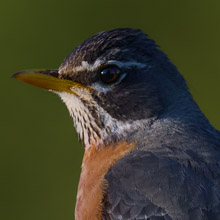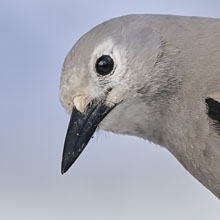Availability: Undetermined - Enquiries?
In the Field
Z 7II Testing - Sunrise Snack for the Kids. Findlay Creek Region (East Kootenays), British Columbia, Canada. May 30, 2021.
This is yet one more gallery post relating my experiences with shooting wildlife using the Nikon Z 7II. Every spring and early summer we have oodles of species of wildlife that breed on or around our property in the East Kootenays of BC. One of my favourites to watch for are the Mountain Bluebirds...they are stunningly beautiful birds and they nest both in natural cavities and - occasionally - in nest boxes on our fenceline. This male Mountain Bluebird and his partner chose a natural cavity to breed in this year (and, ironically, the cavity is located extremely close to a nest box they apparently found unsuitable!). This shot was captured just as the early morning sun was rising over a mountain to the east and JUST before the male entered the cavity to dump a beak-full of bugs on top of its hungry nestlings.
Those who have been following my "adventures" with the new Nikon Zed's will know I am currently shooting with both a Z 6II and a Z 7II. I also have a D6 in my kit. And, until recently, I also had a D500 in my "kit" (not so long ago I sold it). The next addition to my kit will very likely be a Z 9.
To date all the entries in this series have evaluated one aspect or another of the performance of the Z 6II or Z 7II on an individual basis. But, on the day I captured this image (and I'm sure over a lot of the coming days) I had BOTH the Z 6II and the Z 7II with me and I was shooting them in tandem. So how well do the two new Zed's complement one another when shooting wildlife? Do they make a good "team"?
Well, in my view the answer is an unequivocal "yes". We all know that the primary difference between the two cameras (if you are using them for still photography) is that the Z 6II is a 24 MP camera and the Z 7II is a 46 MP camera. Of course, there are real-world performance difference correlates to the resolution difference between the cameras. The lower resolution Z 6II has a faster frame rate and larger burst depth. And, largely owing to its larger pixel pitch, it beats the Z 7II in ISO performance (by about a stop). On the other hand - and often near and dear to the hearts of wildlife shooters - the higher resolution of the Z 7II gives you the ability to crop your image more extensively and STILL be left with enough pixels dedicated to your subject to use it in many ways, including making a decent-sized print.
On the day I shot this image I went into the field planning on shooting the nesting bluebirds with my Z 6II with my 500mm PF plus 2x teleconverter (largely because we had been just been through several consecutive overcast mornings and I knew that the 500mm PF and 2x TC combo would push the ISO higher than I was comfortable taking the Z 7II). But when I arrived at the nest cavity it was clear as a bell out, and I knew that once the sun was up I'd have plenty of light to work with. So, I quickly changed plans and mounted up my Z 7II with the 500mm PF plus a 1.4x TC. Why? To leverage the slightly better image quality (and slightly faster AF) I would get with the 1.4x TC than with the 2x TC, and even though I wouldn't have QUITE the same reach, I knew the extra resolution of the Z 7II would allow me to crop the resulting image the way I wanted with lots of pixels to spare. Of course, because the Z 6II and Z 7II have virtually identical control layouts and customization options, once you begin shooting you don't have to waste any brain cells trying to remember which camera you're using and what each button does on the particular camera in your hands. So you end up with two cameras with different performance attributes that cover a wider range of conditions - but can be set up (and that handle) identically. Which I find really, really nice in the field. In general, I bought my Z 7II for shooting animalscapes and my Z 6II for when I needed higher ISO performance, but in reality I switch between them on a pretty regular basis, depending on the conditions and specifics of the shooting situation.
It's hard to find two photographers with the exact same needs in their equipment. I've met some that like to go into a field situation with a pair of identical bodies (but often with different lenses mounted on them), presumably because they prefer to shoot with two cameras with identical ergonomics and handling. I personally look for two cameras that complement one another well - and that between them they extend the total range of conditions I can work in (and thus come home with the best possible images). If it just so happens the two complementary cameras are identical in layout and ergonomics...well...all the better! So...at least under the pandemic-limited situations under which I've been able to shoot wildlife with the Z 6II and Z 7II so far I am very impressed with how well they "team up" as a twosome in the field.
Here's a larger version (4800 pixel) of this beautiful bluebird:
• Sunrise Snack for the Kids: Download 4800 pixel image (JPEG: 4.1 MB)
ADDITIONAL NOTES:
1. This image - in all resolutions - is protected by copyright. I'm fine with personal uses of them (including use as desktop backgrounds or screensavers on your own computer), but unauthorized commercial use of the image is prohibited by law. Thanks in advance for respecting my copyright!
2. Like all photographs on this website, this image was captured following the strict ethical guidelines described in The Wildlife FIRST! Principles of Photographer Conduct. I encourage all wildlife photographers to always put the welfare of their subjects above the value of their photographs.
Behind the Camera
Z 7II Testing - Sunrise Snack for the Kids. Findlay Creek Region (East Kootenays), British Columbia, Canada. May 30, 2021.
Compressed RAW (NEF) 14-bit format; ISO 800.
Nikon Z 7II paired with Nikkor 500mm f5.6E PF plus TC-14EIII (1.4x) teleconverter (total focal length of 700mm). Supported on Jobu Killarney tripod with Jobu HD Mk IV gimbal head. VR on and in Sport mode. Single Area AF area mode.
1/500s @ f10; -0.33 stop compensation from matrix-metered exposure setting.
At the Computer
Z 7II Testing - Sunrise Snack for the Kids. Findlay Creek Region (East Kootenays), British Columbia, Canada. May 30, 2021.
RAW Conversion to 16-bit PSD file (and JPEG files for web use), including all global and selective adjustments, using Phase One's Capture One Pro 21. Global adjustments on this image were limited to a single tweak to exposure. Selective local adjustments performed using Capture One Pro's layers and masking tools. In this case selective adjustments were made on 8 separate layers and included one or more tweaks to brightness, blacks, clarity, shadows, exposure, and saturation.
Photoshop modifications were limited to the insertion of the watermark and/or text.
Conservation
Z 7II Testing - Sunrise Snack for the Kids. Findlay Creek Region (East Kootenays), British Columbia, Canada. May 30, 2021.
Species Status in Canada*: This species is not designated as at risk.
The Mountain Bluebird (Sialia currucoides) is a brilliantly coloured thrush found over much of western North America. Despite its name, it is NOT limited in distribution to mountain regions. In the early 1900's Mountain Bluebird populations plummeted due to loss of nesting habitat (natural cavities) due to the introduction of alien species, including House Sparrows and Starlings. An aggressive conservation effort in the form of the introduction of species-specific nest boxes worked and today bluebirds are common again.
This adult male Mountain Bluebird was photographed in the East Kootenays of BC, Canada. The area supports a strong population of Mountain Bluebirds and smaller population of Western Bluebirds.
One of the most fascinating things about the Mountain Bluebird is that the striking ultraviolet-blue coloration of feathers does not come from any type of pigment that has been incorporated into feathers. Instead, the source of the coloration is completely "structural" in that the microanatomy of the feather barbs in a way that primarily reflects ultraviolet and blue light while largely absorbing wavelengths of light that are perceived by humans as other colors (green, yellow, red, etc.). So what you are seeing is differentially reflected ultraviolet-blue light...NOT pigmentation!
*as determined by COSEWIC: The Committee on the Status of Endangered Wildlife in Canada







